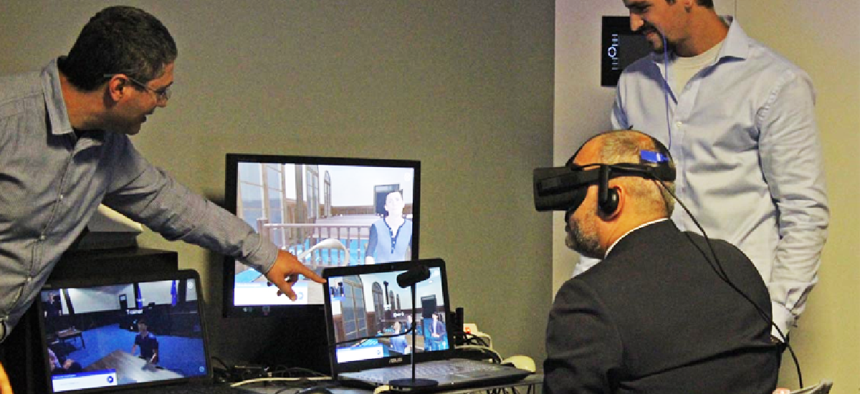Virtual training for international drug investigators


Connecting state and local government leaders
LAW-TRAIN, which lets investigators practice conducting interviews in a virtual, multicultural context, is part of a growing range of mixed-reality training platforms.
Investigating drug trafficking often involves cross-border investigations, which, understandably, can be riddled with obstacles and miscommunications because of investigators' different cultural and legal perspectives.
With the LAW-TRAIN mixed-reality platform, police forces can train their officers in conducting joint investigative interviews. The goal is to allow geographically dispersed officers to work more closely “in a multicultural and virtual reality context,” according to the European Commission's Community Research and Development Information Service, which developed the platform.
“We know that training by role-playing is very beneficial,” Professor Sarit Kraus, LAW-TRAIN coordinator for Bar Ilan University in Israel, said in a description of the project. “But doing it with a team of senior law-enforcement personnel from different European countries is very difficult: all are very busy and located in different places.”
LAW-TRAIN has used research in computer science and criminology to create virtual suspects “with changing attributes and parameters.”
Before putting on an Oculus Rift headset headset, trainees are given details about the case and create a plan for the interview with their peers. Once the program is running, they interview a virtual suspect who has a virtual lawyer present. A “virtual trainer” observers the interview and provides feedback along the way.
"Recruiting a person to play the role of the suspect is difficult, so LAW-TRAIN provides a virtual suspect that the team can interview," Kraus said. Besides supporting many scenarios, it also allows trainers to create new ones and track trainees’ performance. The virtual trainer can "comment on the trainees’ performance and any deviation from the European ethical guidelines online," she added.
LAW-TRAIN has not yet been commercialized, but will be available on various platforms. It requires only a fast local computer and a secure internet site for video conferencing and information analysis. It was designed as a generic engine, so scenarios for other types of illegal activities as well as other cross-border teamwork training will likely be developed, officials said.
Creating virtual training environments is often one of the first uses cases mentioned when talking about the potential of virtual or augmented reality.
Such tools have been used in medicine for some time to train doctors for surgery and help medical students practice interacting with patients, but cheaper hardware is making it a realistic option for a much broader range of uses, according to Susan Persky, the director of the Immersive Virtual Environment Testing Area at the National Institutes of Health.
To help train security staff at nuclear facilities, for example, an augmented-reality model of a hypothetical facility was created by researchers at Sandia National Laboratories.
“With augmented reality, we're able to do things that we wouldn't normally be able to do,” Tam Le, a computer scientist at Sandia who helped create the training environment, told Sandia LabNews. “We can show virtual characters handling material, putting it into the system, show how the material is taken out, the material flow, understand the vulnerabilities and where materials can be lost."
Virtual and augmented technology also could help prisoners get the education they need to succeed once they’ve been released, according to Raji Wahidy. Wahidy founded the startup Virtual Rehab, which is working to create educational environments for basic education like math and science, but also vocational training like automotive repair and welding.
VR training was even used in the run-up to the 2018 Olympics. Strivr Labs created virtual versions of the slopes athletes would be competing on so they could "ski" the mountain as many times as they wanted to get a feel for its turns and drops.
Jeremy Bailenson, the co-founder of Strivr and director of the Virtual Human Interaction Lab at Stanford University, spoke about the project in a company blog post.
“One of the rules of thumb I use for VR is that the technology is especially useful for teachable moments that are rare in the physical world,” Bailenson said. “Getting mere minutes to prepare on the ski race course is the definition of rare. But with VR, the scarcity issue is greatly diminished," he said.
NEXT STORY: Camera combo for spotting IEDs




